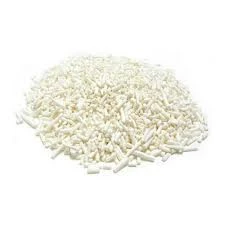
Understanding Residual Solvents and Their Impact on Product Quality and Safety
Residual Solvents Understanding Their Impact and Management
Residual solvents are organic volatile chemicals that may remain in a product after manufacturing. They originate from various sources, including raw materials, processing aids, or as by-products of chemical reactions. While residual solvents are commonplace in several industries, particularly in pharmaceuticals and food production, their presence can pose risks to safety and health, making their management critical.
The significance of monitoring residual solvents cannot be overstated. In the pharmaceutical industry, for instance, solvents used during the synthesis of active pharmaceutical ingredients (APIs) can remain in the final product. The concern arises from the potential toxicity of these solvents, which could lead to adverse health effects if consumed or absorbed by patients. Regulatory bodies, such as the U.S. Food and Drug Administration (FDA) and the International Council for Harmonisation of Technical Requirements for Pharmaceuticals for Human Use (ICH), have established guidelines to limit the acceptable levels of these solvents, emphasizing the need for rigorous testing.
The classification of residual solvents is typically based on their toxicity and potential human health effects
. According to the ICH Q3C guideline, solvents are categorized into three classes Class 1 solvents are considered to be highly toxic and must be avoided in pharmaceutical manufacturing; Class 2 solvents are less toxic but still require limits; and Class 3 solvents are considered to have low toxicity and may be used in smaller amounts. This classification helps manufacturers understand the risks and implement appropriate controls.residual solvents

Management of residual solvents involves several strategies, including their reduction at the source, proper selection of raw materials, and the use of alternative solvents with a lower toxicity profile. Moreover, purification techniques such as distillation or chromatography can be employed to remove unwanted solvents during or after production.
In recent years, there has been a growing trend towards greener practices in manufacturing, leading to the adoption of solvent-free processes or the use of biobased solvents. These methods not only minimize the risks associated with residual solvents but also reduce the environmental footprint of production processes.
In conclusion, while residual solvents play a significant role in many industrial applications, their potential health risks necessitate diligent management and adherence to regulatory guidelines. By implementing effective control measures and embracing innovative alternatives, industries can ensure the safety and quality of their products, ultimately protecting consumer health and well-being. As the spotlight on safety and sustainability intensifies, addressing the issue of residual solvents will remain a priority for manufacturers worldwide.
-
Buy High-Quality Trichloroisocyanuric Acid for Sale | TCCA 90% SupplierNewsAug.30,2025
-
Pure Sodium Dichloroisocyanurate Dihydrate | Powerful DisinfectantNewsAug.29,2025
-
Industrial Chemicals: Quality & Purity for Every IndustryNewsAug.28,2025
-
Nitrile Rubber Honoring Strict Production StandardsNewsAug.22,2025
-
Aspartame Ingredients Honoring Food Safety ValuesNewsAug.22,2025
-
Fertilizer for Balanced Plant NutritionNewsAug.22,2025
-
Cyanide Gold Processing with High Purity AdditivesNewsAug.22,2025
Hebei Tenger Chemical Technology Co., Ltd. focuses on the chemical industry and is committed to the export service of chemical raw materials.
-

view more DiethanolisopropanolamineIn the ever-growing field of chemical solutions, diethanolisopropanolamine (DEIPA) stands out as a versatile and important compound. Due to its unique chemical structure and properties, DEIPA is of interest to various industries including construction, personal care, and agriculture. -

view more TriisopropanolamineTriisopropanolamine (TIPA) alkanol amine substance, is a kind of alcohol amine compound with amino and alcohol hydroxyl, and because of its molecules contains both amino and hydroxyl. -

view more Tetramethyl Thiuram DisulfideTetramethyl thiuram disulfide, also known as TMTD, is a white to light-yellow powder with a distinct sulfur-like odor. It is soluble in organic solvents such as benzene, acetone, and ethyl acetate, making it highly versatile for use in different formulations. TMTD is known for its excellent vulcanization acceleration properties, which makes it a key ingredient in the production of rubber products. Additionally, it acts as an effective fungicide and bactericide, making it valuable in agricultural applications. Its high purity and stability ensure consistent performance, making it a preferred choice for manufacturers across various industries.





